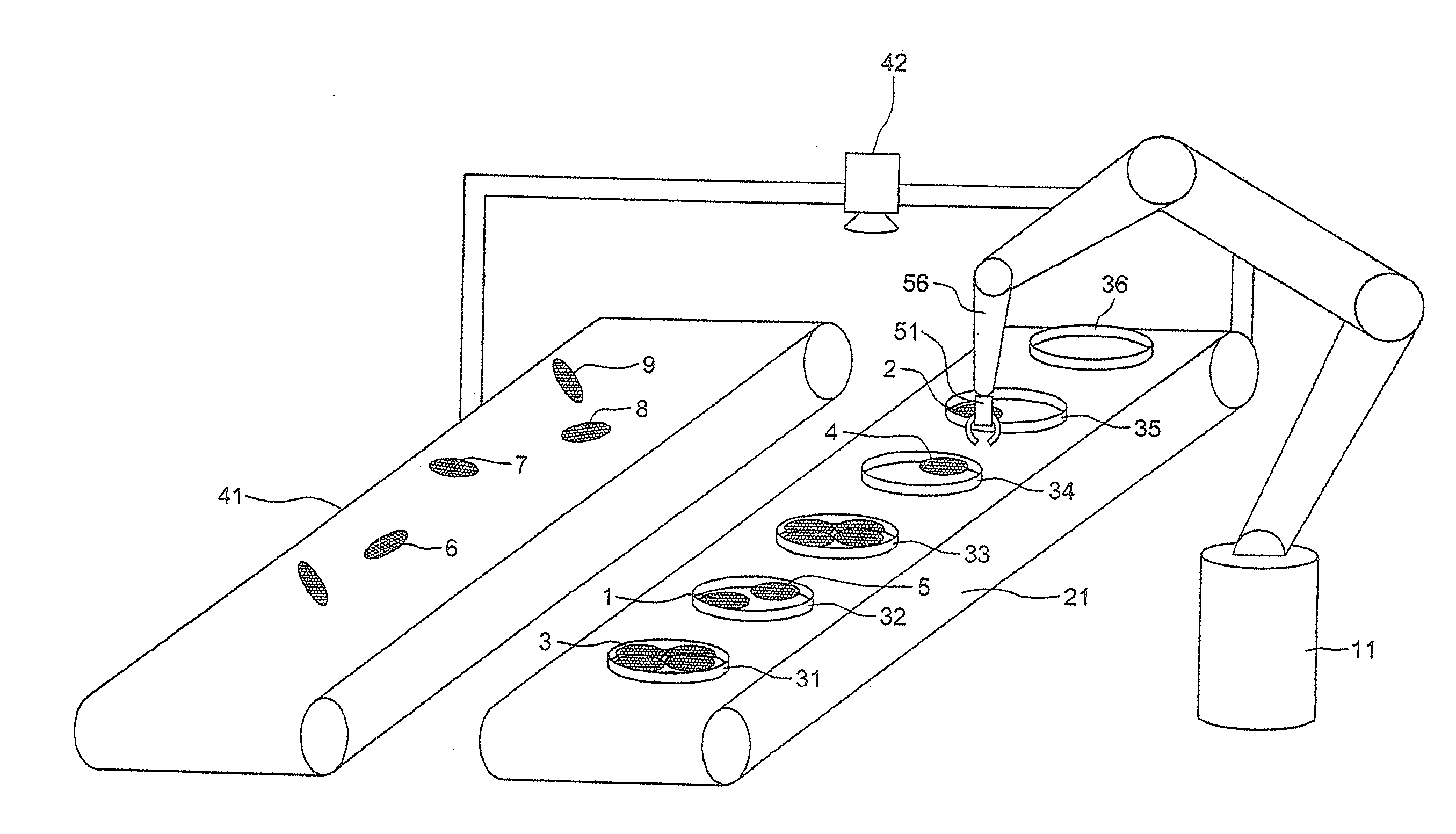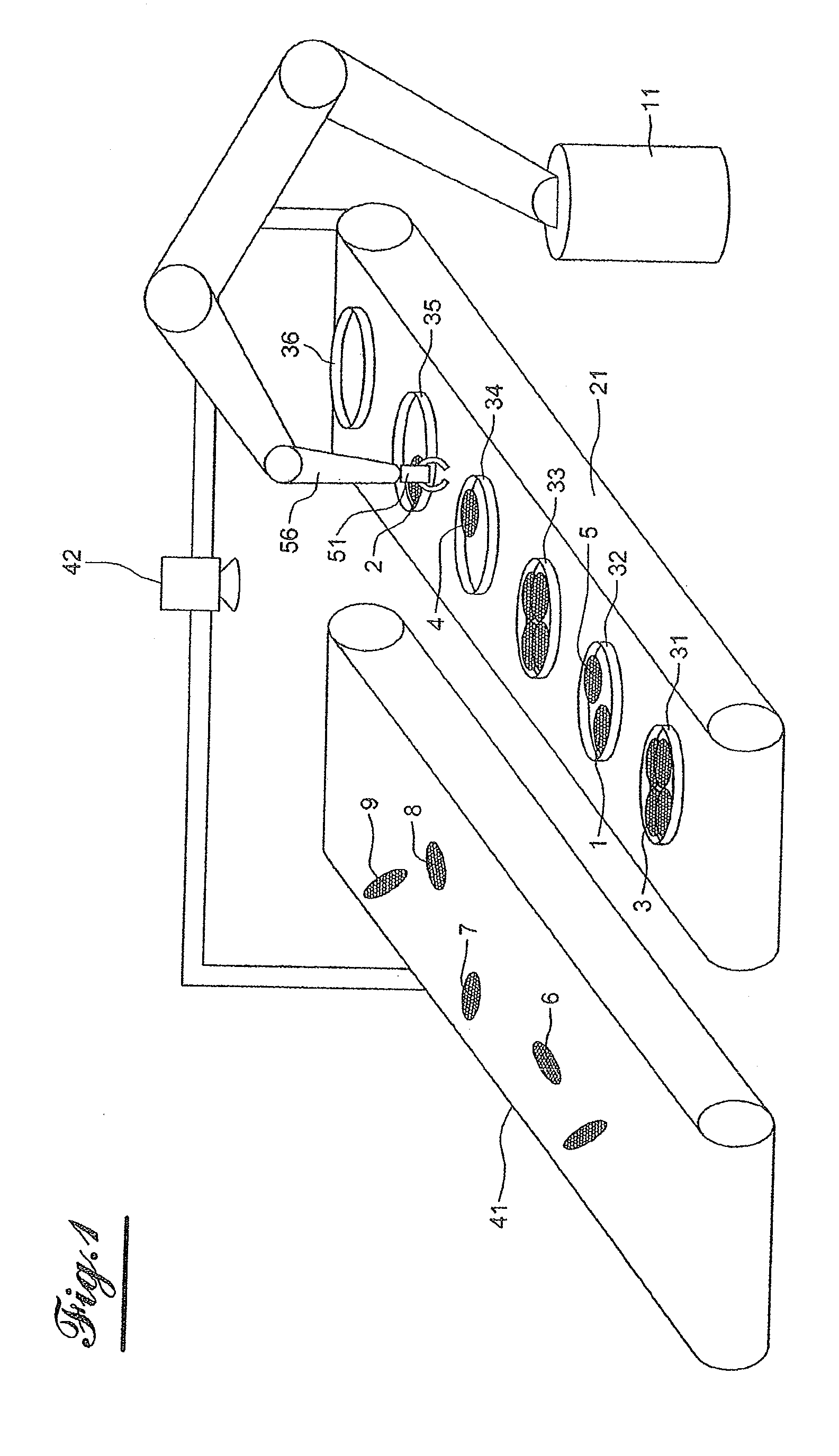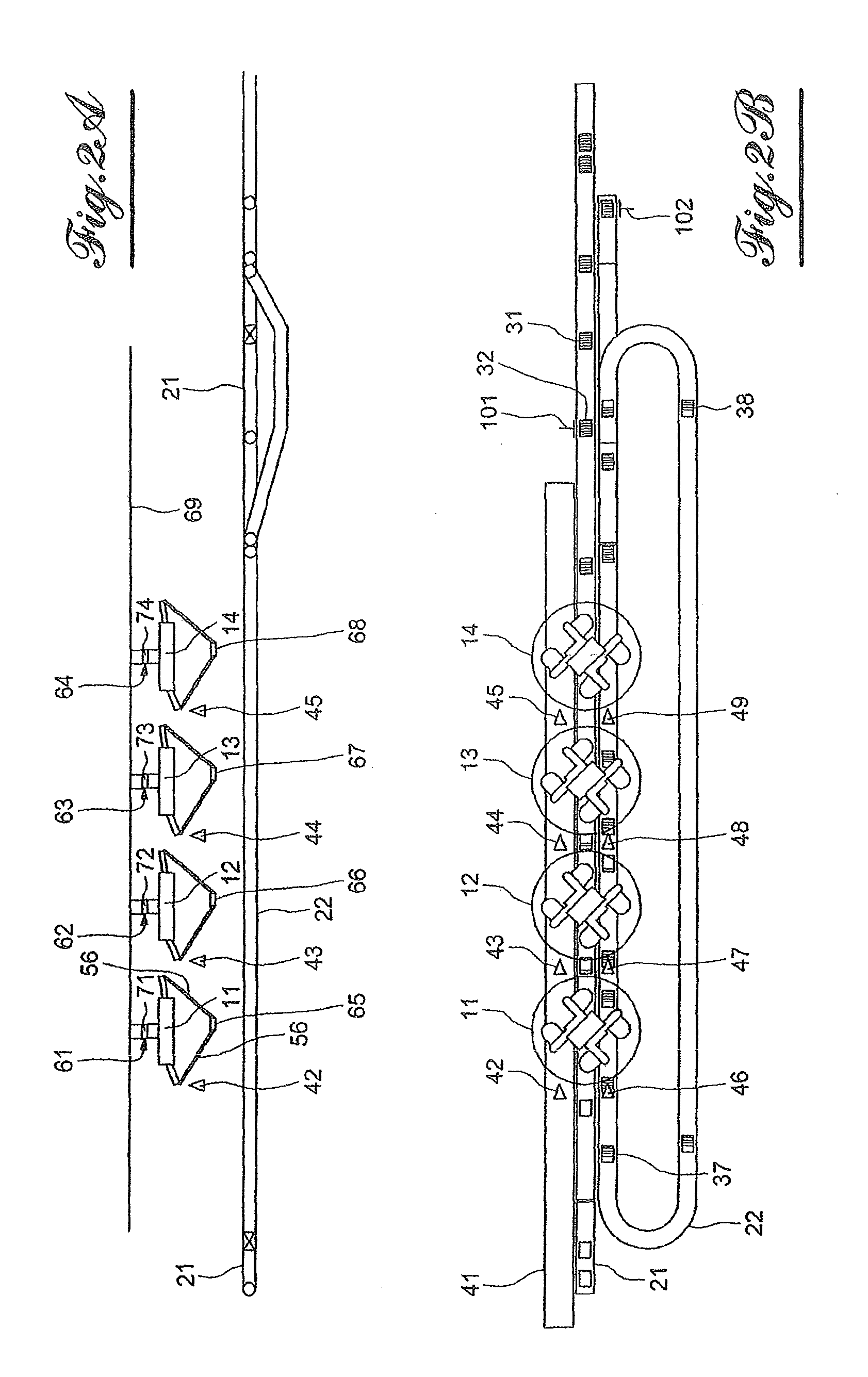Method of treating objects according to their individual weights
a technology of object weight and weight, applied in the field of individual weight treatment of objects, can solve the problems of excessive weight over significant quantities of products, inability to precisely control the weight, and inability to meet the requirements of packaging weight, etc., to achieve the effect of maximizing the probability calculated
- Summary
- Abstract
- Description
- Claims
- Application Information
AI Technical Summary
Problems solved by technology
Method used
Image
Examples
Embodiment Construction
[0028]In reference to FIG. 1, a packaging chain comprises a conveyor 41 on which sardines 6, 7, 8, 9 are presented in bulk, scattered, which constitute objects having a random weight distribution. Other foodstuffs can constitute such objects, such as filets of mackerel or other fish, poultry filets or livers, or another other product whereof the weight is not necessarily calibrated. The bulk presentation results from prior treatment these objects have undergone: bulk, washing, cutting, cooking, portioning, slicing, sawing, etc.
[0029]A conveyor 21 receives containers 36 of foodstuffs that are initially empty and discharges containers 31 that are full. In the example illustrated by FIG. 1, the containers are sardine boxes. For fruits, the containers could be bags.
[0030]A robot 11 provided with a gripper 51 mounted at the end of a hinged arm 56 distributes sardines 1, 2, 3, 4, 5 in the boxes 31, 32, 33, 34, 35 until a minimum weight is accumulated in each box that the robot fills by ta...
PUM
 Login to View More
Login to View More Abstract
Description
Claims
Application Information
 Login to View More
Login to View More - R&D
- Intellectual Property
- Life Sciences
- Materials
- Tech Scout
- Unparalleled Data Quality
- Higher Quality Content
- 60% Fewer Hallucinations
Browse by: Latest US Patents, China's latest patents, Technical Efficacy Thesaurus, Application Domain, Technology Topic, Popular Technical Reports.
© 2025 PatSnap. All rights reserved.Legal|Privacy policy|Modern Slavery Act Transparency Statement|Sitemap|About US| Contact US: help@patsnap.com



